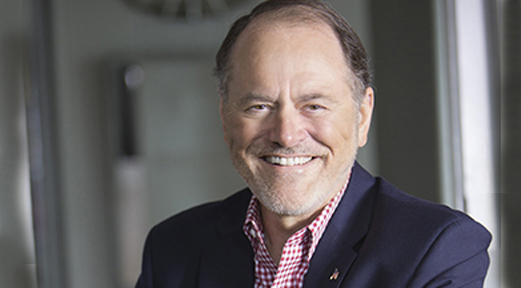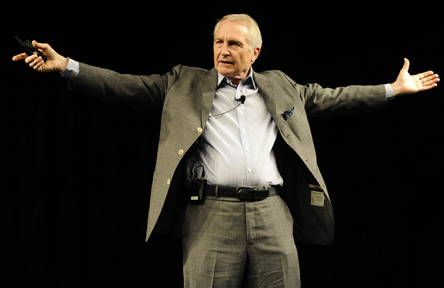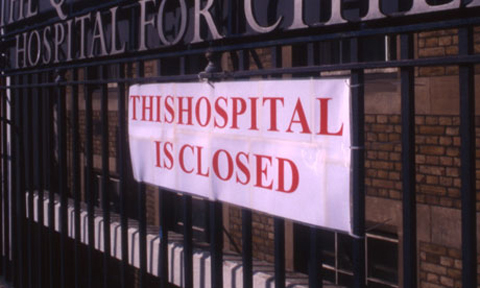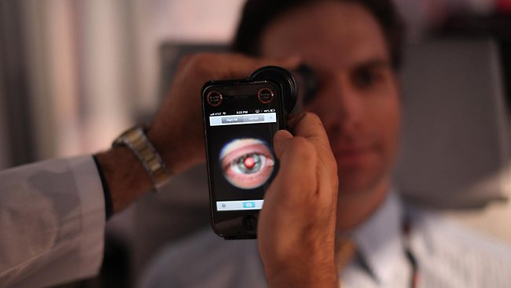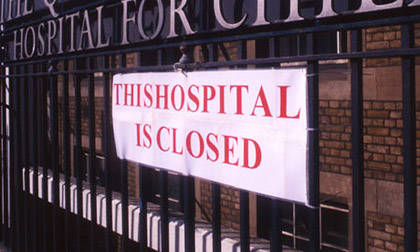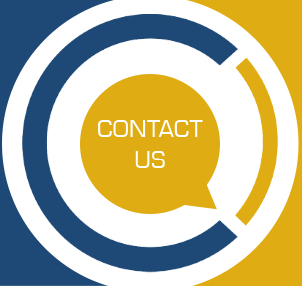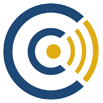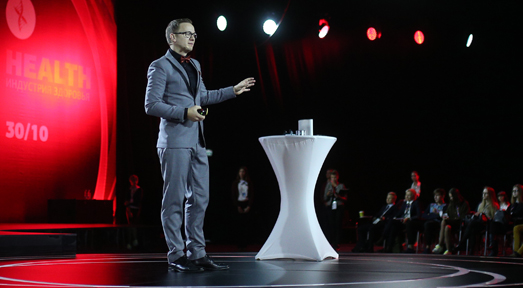
Transforming Healthcare through Technology, with Bertalan Mesko
| “Disruption” sounds less catchy when mistakes can cost lives. But in our efforts to protect patients, we’ve hobbled our ability to innovate, which in turn hurts patients by keeping treatment breakthroughs out of their hands. | |
| |
 | You have said that you sometimes feel like you’re living in a sci-fi novel because of all the fantastical new medical technologies that are being developed. Could you give us a few examples of specific devices that are the most imaginative? |
 | If you look closely, medical technology today is simply breathtaking. Surgeons are using 3D printed organ models to prepare for very difficult surgeries, and their surgical robots are so precise that they can peel a grape and then stitch the skin back on flawlessly.
Patients in hospitals can stay with their loved ones virtually using virtual reality goggles, removing the stress and feelings of loneliness that often accompany extended stays in a ward. Cancer patients have greater chance of survival because oncologists are tailoring therapy to their tumor’s molecular makeup. A disabled patient recently walked down the aisle with the love of his life thanks to a medical exoskeleton. Scientists are even working to create the tricorder from Star Trek - a true medical multi-tool that can identify most disease with a simple scan. The problem is when we walk into the general practitioner’s office it’s hard to feel the same. This is what my work aims to change by talking with innovators, understanding the implications of what they’re working on, and then helping patients, doctors, and regulators make the most of them. |
 | What barriers do new medical technologies face before going mainstream? |
 | One barrier is that regulators are wary of new technologies. “Disruption” sounds less catchy when mistakes can cost lives. But in our efforts to protect patients, we’ve hobbled our ability to innovate, which in turn hurts patients by keeping treatment breakthroughs out of their hands.
Another part of the problem is that disruptive innovations are not well known among patients, doctors, and even regulators. Medical education is focused on age-old technology and if anything, cautions doctors against embracing change. Patients, on the other hand, cannot be expected to understand the often highly complex innovations that developers and scientists come up with. While the value of “user experience” has been understood for years in the tech sector, medical innovators still rarely design their solutions with the patient or physician in mind. As Susannah Fox, the Chief Technology Officer of the U.S. Department of Health and Human Services, wonderfully pointed out, we need a cultural, not a technological revolution. If all stakeholders of medicine acknowledge that technologies are here to support, assist, and extend us, we will face amazing times. The history of computing shows that to truly transform our everyday lives, technological advance must be made useable by a large group of people. |
| I believe we’ll begin by turning today’s most troublesome diseases such as cancer, cardiovascular disease, and diabetes into chronic conditions that have little impact on quality of life. | |
| |
 | How do you foresee new technologies affecting aging and the human lifespan? |
 | Certain movements such as transhumanism focus on transforming aging into a chronic condition we can treat. However, I believe we’ll begin by turning today’s most troublesome diseases such as cancer, cardiovascular disease, and diabetes into chronic conditions that have little impact on quality of life. These non-communicable conditions cut short the lives of millions every year, and their impact is greatest in the developed world. In the meantime, telemedicine, smart algorithms, and cheap, ubiquitous sensors will bring affordable, digitized care to where it’s most lacking in the developing world.
Eventually, the point of care will shift from the clinic to wherever the patient is, and prevention will finally win out over treatment as people start quantifying themselves and improving their life choices based on health data that they seamlessly produce. These changes will increase the average lifespan of humans tremendously across the globe. All societies will need to prepare, as our current systems can’t handle a whole generation of people living well into their hundreds. |
 | What are some of the ethical dilemmas posed by new healthcare technologies? |
 | Currently, there are more ethical challenges than advantages, and if we don’t prepare in time, our future could be bleak. Even today, apps and devices can breach our privacy. Today people can quickly find where we are or what we look at online, but what will we do when someone can easily learn how we react biologically to something, or if we carry a disease that we wouldn’t want others to know about?
Genetic engineering, enhancement, and therapy present other types of ethical issues. Though financial differences still make the lives of the rich very different from those of the poor, modernity made it possible to climb the social ladder through sheer skill and determination. This would end if technology could create biological differences among people only because some of them can afford to augment their capabilities while others cannot. These are just some of the dangers we face if regulators don’t create frameworks for disruptive health innovation. But governments cannot hope to regulate what they don’t understand, so innovation has been lacking in some areas (like artificial intelligence) and slow in others (like direct to consumer genomics). Meanwhile, patients are frustrated. As they gain access to smart, powerful technology that can be used to diagnose and design treatment for their conditions, they will use them even if they’re not yet correctly tested and regulated - a move that will put patients at risk and result in chaos. The story of Theranos is a powerful example of these dangers. |
 | Referring to the previous question, how do you suggest government agencies approach regulating new healthcare technologies? |
 | Regulatory agencies should be in the forefront of innovation, with the most thorough knowledge about where technology is heading. They should create a framework that allows new technologies to reach the market in a regulated way faster than before. Having launched a Patient Engagement Advisory Board and organized workshops about 3D printing biomaterials, the FDA has made promising steps forward. Overall though, regulators need to work closely with those who innovate, and in general this is not what’s happening today. |
| Physicians must learn to work with patients and treat them as equal partners, while patients must assume more responsibility for their health and learn to be better judges of health information. | |
| |
 | How is the advance of medical technology affecting the patient/healthcare provider dynamic? |
 | The traditional healthcare system will be turned upside down. For two millennia since Hippocrates, only physicians were able to acquire and access medical data and make medical decisions. This model of medicine trains physicians to think they know best what’s good for the patient. Patients are subjects of healthcare, not partners, as their bodies can trick them and their lack of physiological education prevents them from contributing.
With innovations like wearable sensors, direct to consumer genetics, and online medical resources, patients can now learn as much about their health as physicians. This is great, as it allows them to live better and contribute to health decisions for better outcomes, but most of them are not yet equipped to use these tools responsibly. Much of medical advice online is plain wrong, but patients are putting the word of bloggers above that of their doctors if it better fits their views. Trust in physicians is the lowest in 50 years, even though medical outcomes are steadily increasing. Though technology is causing this upheaval, a cultural change is needed to resolve it. Physicians must learn to work with patients and treat them as equal partners, while patients must assume more responsibility for their health and learn to be better judges of health information. This shift will result in a patient-centered healthcare system that ensures patients are motivated to stay healthy and helps doctors do their jobs better with the aid of technology. |
 | What is the possibility of technology replacing human health care providers? |
 | The most complicated jobs requiring creativity and problem solving skills - as well as the simplest jobs requiring empathy and caretaking skills - will be hard to replace, but every other profession in between will face challenging times.
Some say technology will replace 80% of doctors in the future. I disagree. Instead, technology will finally allow doctors to focus on what makes them good physicians: treating patients and innovating, while letting automation do the repetitive part of the work. The job of healthcare professionals today is improving upon those skills that make them exceptional human beings. My motto is that if a certain technology can replace me because it’s cheaper, faster, and more efficient than me, I would like to get replaced. One of the most important traits of all healthcare professionals though, is empathy, which is among the hardest to replicate artificially. If providers combine this with an understanding of digital solutions and a knack for innovating in their practice, they won’t have to worry. They should have more time for patients, spend less time on mind-numbing repetitive tasks, and overall enjoy their work more. |
 | What are some steps health care providers can take to incorporate new technologies while ensuring that their roles do not become obsolete? |
 | We need to acquire new skills like digital literacy, problem solving, and empathy. Digital literacy sounds very challenging to many physicians I talk to, but actually it’s the easiest of those skills to master. It basically means we are able to feel at home in the digital jungle of the web and social media. By understanding how to digest information, we can keep ourselves up-to-date. Learning itself has been democratized and transformed. Duolingo helps you learn dozens of languages. The smartphone apps Lumosity and Elevate help improve cognitive skills. Free and easy-to-use solutions are everywhere.
Last but not least, all the stakeholders in medicine are active online and having their voices heard through social media channels, so providers should listen to them and ask questions before making decisions that have an impact on our lives. Furthermore, every hospital manager and decision maker could invite patients to the table. |
| For the first time in history, we can improve our lifestyle by getting data immediately at home. | |
| |
 | What are some examples of how wearable technology can help people live their lives better? |
 | Wearable sensors can help people obtain data about their lifestyle choices like never before. For the first time in history, we can improve our lifestyle by getting data immediately at home. We should grab this chance and start small. I first gave a score between 1 and 10 to my mental, emotional, and physical health every day. Then I needed devices to provide me with data. These devices provide us with a fascinating experiment during which we learn more about ourselves than we expect.
We don’t have to wake up groggy and miserable if we measure our sleep quality and use devices to wake us up at the perfect moment in the morning. We can measure data about our physical activities and use running apps to motivate ourselves for exercise and as a result, live better. We now have easy access to our blood pressure, ECG, stress levels, and more. By obtaining data, we can learn more about our mental, physical, and emotional health. It is more about using data to improve our lives rather than just dealing with devices. Those will get thinner, smaller, and cheaper by time. |
 | What are your top recommended wearable fitness trackers? |
 | I’m happy to share the wearables which have proven useful for me, but it’s often up to individual preference and habits. I use Fitbit Surge for physical activity, AliveCor for ECG, the Pebble smartwatch paired with the Sleep app on my Android phone for sleep quality, the Gymwatch for indoor training, the PIP for tracking and managing stress and the Muse for meditation. I recently published an article on my top 10 choices of health wearables on my blog at medicalfuturist.com.
================================================================= |

